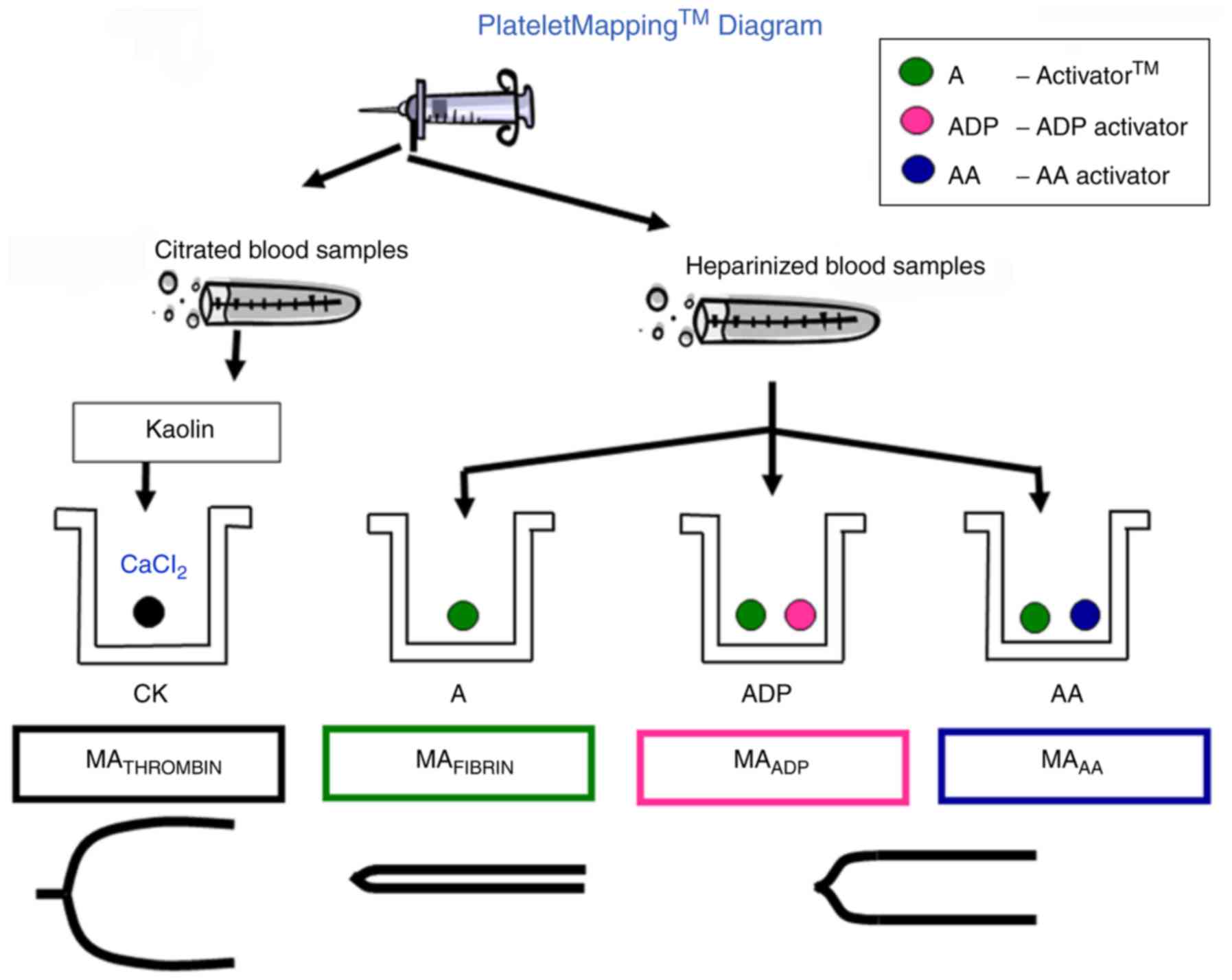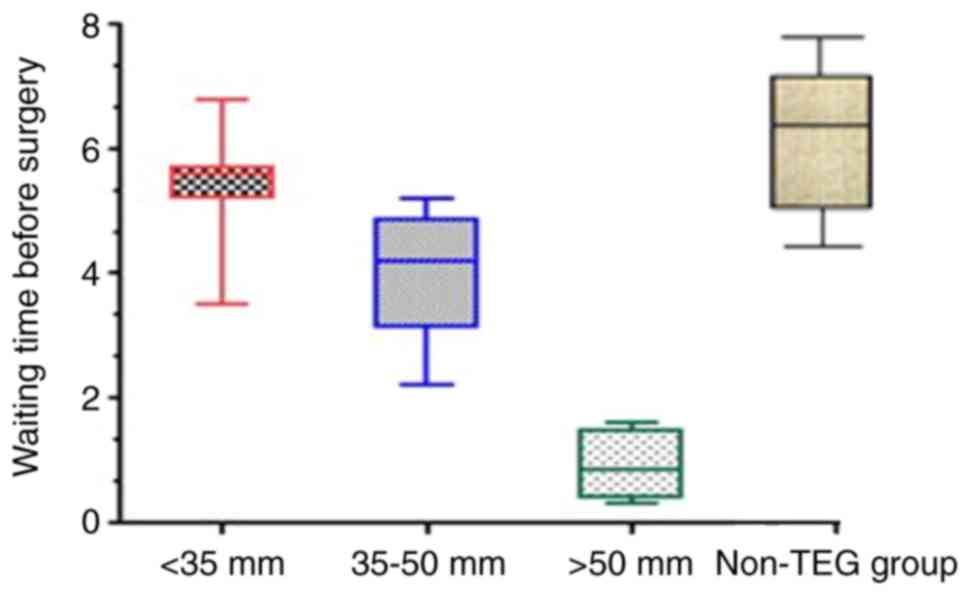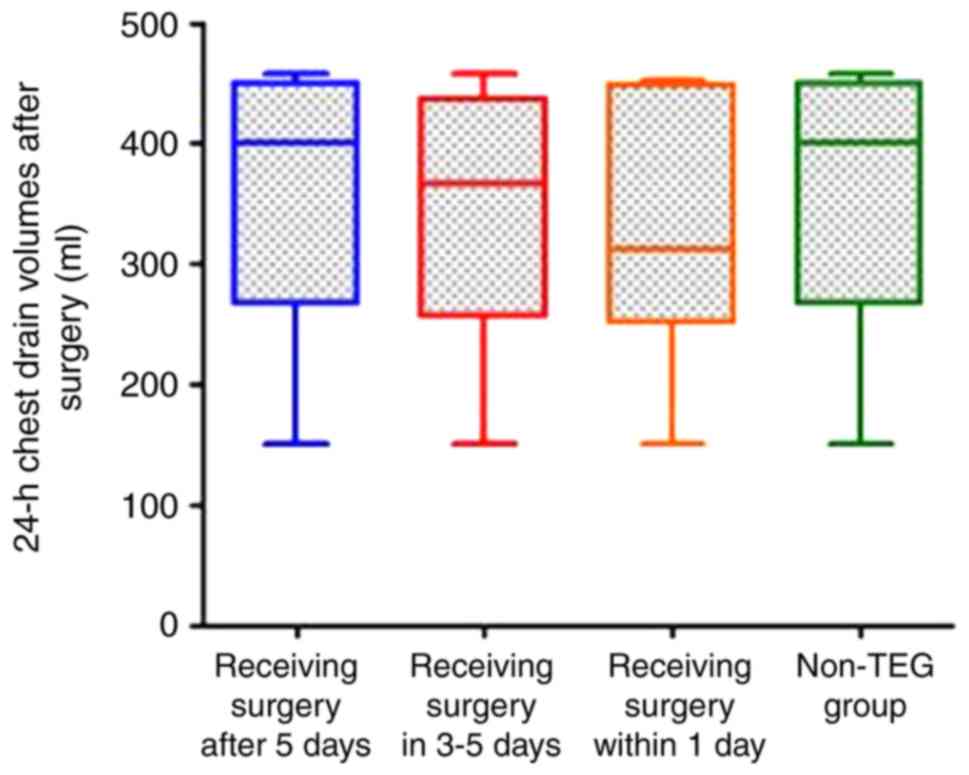|
1
|
Roffi M, Gencer B, Storey RF, Andreotti F
and Patrono C: Clinical perspectives and pearls from the 2015 ESC
NSTE-ACS guidelines. Curr Cardiol Rep. 18:482016. View Article : Google Scholar : PubMed/NCBI
|
|
2
|
Yanagawa B, Ruel M, Bonneau C, Lee MM,
Chung J, Al Shouli S, Fagan A, Al Khalifa A, White CW, Yamashita
MH, et al: Dual antiplatelet therapy use by Canadian cardiac
surgeons. J Thorac Cardiovasc Surg. 150:1548–1554.e3. 2015.
View Article : Google Scholar : PubMed/NCBI
|
|
3
|
Barbieri L, Pergolini P, Verdoia M, Rolla
R, Nardin M, Marino P, Bellomo G, Suryapranata H and de Luca G;
Novara Atherosclerosis Study Group (NAS): Platelet reactivity in
patients with impaired renal function receiving dual antiplatelet
therapy with clopidogrel or ticagrelor. Vascul Pharmacol. 79:11–15.
2016. View Article : Google Scholar : PubMed/NCBI
|
|
4
|
Janssen PWA, Claassens DMF, Willemsen LM,
Bergmeijer TO, Klein P and Ten Berg JM: Perioperative management of
antiplatelet treatment in patients undergoing isolated coronary
artery bypass grafting in Dutch cardiothoracic centres. Neth Heart
J. 25:482–489. 2017. View Article : Google Scholar : PubMed/NCBI
|
|
5
|
Pilgrim T and Windecker S: Antiplatelet
therapy for secondary prevention of coronary artery disease. Heart.
100:1750–1756. 2014. View Article : Google Scholar : PubMed/NCBI
|
|
6
|
Levine GN, Bates ER, Bittl JA, Brindis RG,
Fihn SD, Fleisher LA, Granger CB, Lange RA, Mack MJ, Mauri L, et
al: 2016 ACC/AHA guideline focused update on duration of dual
antiplatelet therapy in patients with coronary artery disease: A
report of the American College of Cardiology/American Heart
Association Task Force on Clinical Practice Guidelines. J Thorac
Cardiovasc Surg. 152:1243–1275. 2016. View Article : Google Scholar : PubMed/NCBI
|
|
7
|
van Diepen S, Fuster V, Verma S, Hamza TH,
Siami FS, Goodman SG and Farkouh ME: Dual antiplatelet therapy
versus aspirin monotherapy in diabetics with multivessel disease
undergoing CABG: FREEDOM insights. J Am Coll Cardiol. 69:119–127.
2017. View Article : Google Scholar : PubMed/NCBI
|
|
8
|
Verma S, Goodman SG, Mehta SR, Latter DA,
Ruel M, Gupta M, Yanagawa B, Al-Omran M, Gupta N, Teoh H, et al:
Should dual antiplatelet therapy be used in patients following
coronary artery bypass surgery? A meta-analysis of randomized
controlled trials. BMC Surg. 15:1122015. View Article : Google Scholar : PubMed/NCBI
|
|
9
|
Cheng JW: Ticagrelor: Oral reversible
P2Y(12) receptor antagonist for the management of acute coronary
syndromes. Clin Ther. 34:1209–1220. 2012. View Article : Google Scholar : PubMed/NCBI
|
|
10
|
Karon BS, Tolan NV, Koch CD, Wockenfus AM,
Miller RS, Lingineni RK, Pruthi RK, Chen D and Jaffe AS: Precision
and reliability of 5 platelet function tests in healthy volunteers
and donors on daily antiplatelet agent therapy. Clin Chem.
60:1524–1531. 2014. View Article : Google Scholar : PubMed/NCBI
|
|
11
|
Tantry US, Bonello L, Aradi D, Price MJ,
Jeong YH, Angiolillo DJ, Stone GW, Curzen N, Geisler T, Ten Berg J,
et al: Consensus and update on the definition of on-treatment
platelet reactivity to adenosine diphosphate associated with
ischemia and bleeding. J Am Coll Cardiol. 62:2261–2273. 2013.
View Article : Google Scholar : PubMed/NCBI
|
|
12
|
Bomb R, Oliphant CS and Khouzam RN: Dual
antiplatelet therapy after coronary artery bypass grafting in the
setting of acute coronary syndrome. Am J Cardiol. 116:148–154.
2015. View Article : Google Scholar : PubMed/NCBI
|
|
13
|
Fitchett D, Eikelboom J, Fremes S, Mazer
D, Singh S, Bittira B, Brister S, Graham J, Gupta M, Karkouti K, et
al: Dual antiplatelet therapy in patients requiring urgent coronary
artery bypass grafting surgery: A position statement of the
Canadian Cardiovascular Society. Can J Cardiol. 25:683–689. 2009.
View Article : Google Scholar : PubMed/NCBI
|
|
14
|
Dias JD, Norem K, Doorneweerd DD, Thurer
RL, Popovsky MA and Omert LA: Use of thromboelastography (TEG) for
detection of new oral anticoagulants. Arch Pathol Lab Med.
139:665–673. 2015. View Article : Google Scholar : PubMed/NCBI
|
|
15
|
James K, Bertoja E, O'Beirne J and Mallett
S: Use of thromboelastography PlateletMapping to monitor
antithrombotic therapy in a patient with Budd-Chiari syndrome.
Liver Transpl. 16:38–41. 2010. View
Article : Google Scholar : PubMed/NCBI
|
|
16
|
Ramakrishna H, Gutsche JT, Patel PA, Evans
AS, Weiner M, Morozowich ST, Gordon EK, Riha H, Bracker J, Ghadimi
K, et al: The year in cardiothoracic and vascular anesthesia:
Selected highlights from 2016. J Cardiothorac Vasc Anesth. 31:1–13.
2017. View Article : Google Scholar : PubMed/NCBI
|
|
17
|
Hansson EC, Malm CJ, Hesse C, Hornestam B,
Dellborg M, Rexius H and Jeppsson A: Platelet function recovery
after ticagrelor withdrawal in patients awaiting urgent coronary
surgery. Eur J Cardiothorac Surg. 51:633–637. 2017.PubMed/NCBI
|
|
18
|
Tang XF, Han YL, Zhang JH, Wang J, Zhang
Y, Xu B, Gao Z, Qiao SB, Chen J, Wu Y, et al: Comparing of light
transmittance aggregometry and modified thrombelastograph in
predicting clinical outcomes in Chinese patients undergoing
coronary stenting with clopidogrel. Chin Med J (Engl). 128:774–779.
2015. View Article : Google Scholar : PubMed/NCBI
|
|
19
|
Yao Y, Zhang JH, Tang XF, He C, Ma YL, Xu
JJ, Song Y, Liu R, Meng XM, Song L, et al: Head to head comparison
of two point-of-care platelet function tests used for assessment of
on-clopidogrel platelet reactivity in Chinese acute myocardial
infarction patients undergoing percutaneous coronary intervention.
Chin Med J (Engl). 129:2269–2274. 2016. View Article : Google Scholar : PubMed/NCBI
|
|
20
|
Bochsen L, Wiinberg B, Kjelgaard-Hansen M,
Steinbrüchel DA and Johansson PI: Evaluation of the TEG platelet
mapping assay in blood donors. Thromb J. 5:32007. View Article : Google Scholar : PubMed/NCBI
|

















